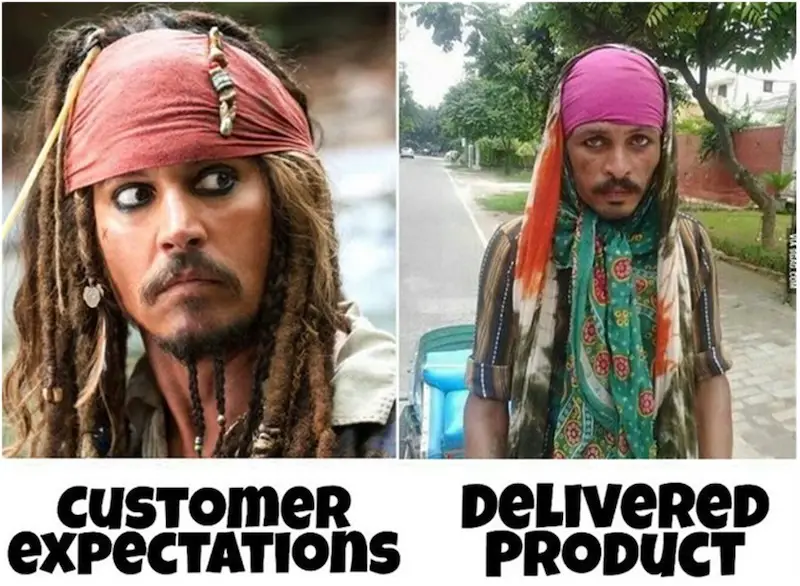The Value of Requirement Gathering in Software Development Life Cycle (SDLC)

Ideally, software should look and behave the way the client has expected. Delivering anything beyond that means the team failed to understand the client’s requirements and deliver on their expectations.
However, here’s what happens in most cases:

There can be many reasons a delivered product looks and behaves differently than the client had expected, such as miscommunication, assumptions, or user feedback. The primary reason is that the software development team must understand client requirements. That’s why requirement gathering is the software development life cycle's first and most critical phase. It keeps you on track with client requirements and delivers a product that solves their purpose.
In this blog, we’ll discuss the requirements and gathering phase, why it matters, and the various steps involved in it. Let’s begin:
What is Requirement Gathering & Analysis?
Requirement gathering and analysis is the first and most critical phase in SDLC, in which we build your software base by asking clients fundamental questions like:
- Who’re your target users?
- What are the pain points of your targeted users?
- How would your software address their problems?
- How would the software behave?
- What do the clients expect from the software?
Once you’ve listed the client requirements, the software development team members discuss and finalize all the work items. Each member goes through the requirement phase documentation, adding their two cents until everyone’s in the same phase.
The end goal of the requirement and gathering phase is to ensure that your software development team has a clear idea of client expectations and their responsibilities.
Who’s involved in the requirements gathering & analysis phase of SDLC?
Depending on the company, the stakeholders involved in SDLC's requirement & analysis phase may vary. However, most teams include the following:
- Business Analysts who bridge the gap between stakeholders and the development team.
- Clients who provide input, clarify expectations and validate requirements.
- Subject Matter Experts (SMEs) who offer insights on global regulations, industry standards, and best practices.
- Project Manager who oversees the project and ensures the team gathers requirements effectively. They also bridge the gap between all the stakeholders.
- Development Team that offers feasibility inputs validates requirements or offers inputs on potential challenges.
Why Does Requirement Gathering & Analysis Matter?
Software development can be challenging, especially if requirements are not precise. Requirement gathering and analysis ensures miscommunication doesn’t hamper your project and that the software you build meets customer needs and delivers business value.
Here’s why other reasons why requirement analysis is critical in software development:
- Requirement gathering and analysis help you keep your team on the same page about the project requirements, reducing misunderstandings, miscommunication, and other blockers.
- Lack of precise requirements often leads to software failing to meet user requirements, leading to resource wastage, reputation damage, and project failure.
- By understanding and defining client requirements, software development teams can accurately estimate the resources and time for building the software. This way, you can complete your project on time and prevent resource wastage.
- Requirement gathering and analysis also set clear expectations with the client, eliminating their anxiety about whether the software would meet their requirements. It also helps them ensure they can hold the team accountable if the software doesn’t turn out to be as expected.
Requirement Gathering & Analysis Process: What Happens During the Stage?
Here are the steps involved during the requirement gathering & analysis phase of the software development life cycle(SDLC):
Step 1: Requirement gathering
In the requirement-gathering stage, business analysts representing the software development team ask the clients questions to gauge customer requirements and objectives. Since it’s impossible to put the survey questionnaire to each customer, stakeholders play a critical role in deciding how the end product will turn out.
Here are some of the best practices you can follow at the requirement-gathering stage:
- Clearly define the boundaries and scope of your object. It would set clear expectations and ensure you don’t lose focus on your end goal.
- Involve all the project stakeholders at this stage. It would ensure everyone involved in the project understands its objectives and their role in it.
- Use various techniques like surveys, interviews, workshops, and prototype testing to gather different requirements and perspectives about the project.
Step 2: Analysis of gathered requirements
After gathering requirements, all the stakeholders hold brainstorming sessions to study the feasibility of each condition and plan the next course of action. This step of requirement gathering and analysis is critical:
- Each stakeholder may have a different viewpoint on the client’s feedback. Requirement gathering analysis would help you ensure you incorporate everyone’s POV.
- Analyzing requirements early will help all the stakeholders be on the same page and clearly understand how the final product will turn out.
You must follow the following practices at this step:
- Prioritize requirements based on importance and impact on the final project.
- Validate and verify requirements through continuous feedback and reviews to ensure accuracy.
- Encourage open and active communication with all stakeholders. Promote active participation, ask questions, and provide regular feedback. It would ensure they can significantly contribute to requirement analysis.
- Involve your development team in requirement analysis right from the beginning. Being technology experts, they might have valuable insights to offer.
Step 3: Documentation
At this stage of requirement gathering, we document all the findings in a detailed document to ensure that everyone understands the project objective and their role in it.
To make the most of this stage, clearly document all the requirements to make it easy for the entire team to understand them. Also, use user stories, user cases, and functional requirements to capture those requirements effectively.
Also, remember that requirements may evolve at any time. Unless you have a change management process to handle them, evaluating, documenting, documenting, and modifying them may be challenging. Hence, you must have a well-defined change management process in place.
Step 4: Convert business objectives into software features
The final step is to convert the business objectives into software features to ensure the software aligns with your business goals.
Here are the steps involved at this stage:
- Breaking the business objectives into detailed user stories.
- Designing flowcharts showcasing various actions the end user needs to perform to fulfill their purpose.
- Specify each goal or user story.
- Create wireframes and diagrams to ensure a smooth workflow of various components.
Requirement gathering & analysis example
Suppose a client approaches you with a content management system (CMS) to help you manage their website content. Here’s how requirement gathering & analysis will look at this stage:
- Step 1: All the stakeholders will meet the client and discuss the requirements and objectives of the content management system.
- Step 2: The team will analyze and assess the client requirements to identify critical features and functionalities of the CMS.
- Step 3: The team would specify and document all the requirements. The idea is to ensure everyone on the team remains on the same page with the project.
- Step 4: The team would convert the business objectives and requirements into software features.
In Conclusion
Clearly-defined requirements are the key to building software that meets user expectations. Hence, it would be best to consider the requirement gathering and analysis stage. It would decide whether your project would succeed or be a miserable failure.
Hopefully, the blog gave you enough idea of requirement gathering and analysis, its importance, and what happens at this stage. Now, it’s time to implement this learning and witness the results. Best of luck!






















